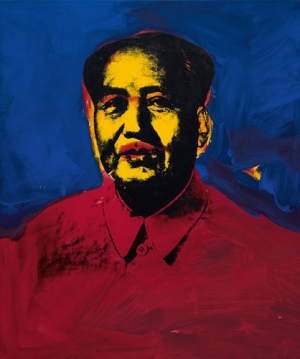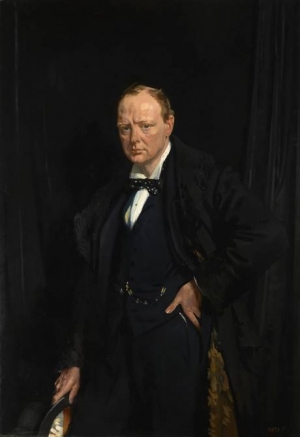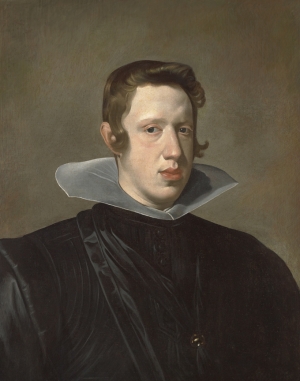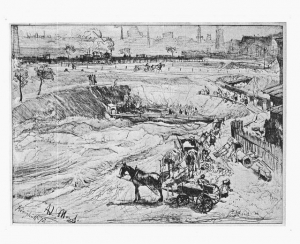|
Displaying items by tag: Portrait

Phillips de Pury & Company’s Contemporary art auction took place on November 15 in New York and garnered $79,904,500, a seemingly humble amount compared to the $887.5 million auction powerhouses Sotheby’s and Christie’s collectively raked in just days earlier.
A smaller scale auction house than its counterparts, Phillips de Pury offered 37 works, many of which were by younger emerging artists. Dan Colen, Tauba Auerbach, Rashid Johnson, and Sterling Ruby all hit record prices, but the top lot of the night was Andy Warhol’s portrait of Mao Zedong (1973) that sold for its low estimate of $12 million. Another Warhol portrait, this time of Jacqueline Kennedy from 1964, was being sold by Eli Broad and reached $11 million; it was expected to bring $10 million to $15 million. Jean-Michel Basquiat’s Humidity (1982) sold for $9 million, falling considerably behind its low estimate of $12 million. Another Basquiat, Self-Portrait (1982) fared better and brought $4 million, breaking its high estimate of $3.5 million despite having its authenticity questioned earlier in the day.
The auction total landed in the middle of its pre-sale estimate of $73,620,000-$110,730,000. While the edgier offerings from Phillips continued to sell well, works by more established artists brought less impressive prices. While this could be the result of mediocre quality, it is important to remember that tying up a $1 billion auction week is no easy feat.

Christie’s Post-War and Contemporary auction edged out Sotheby’s as the blockbuster sale of the week. Profits reached a walloping $412,253,100 on Wednesday night in New York and only six of the 73 lots went unsold. Beating the pre-sale estimate of $289,350,000-$411,800,000, the auction was the second highest grossing in Christie’s history. The record is currently held by the November 2006 Impressionist and Modern sale that brought $491.5 million. However, last night’s auction was the highest earning sale for the Post-War and Contemporary category to date.
During the course of the sale seven artist records were set and six works sold for over $20 million. Brett Gorvy, Chairman and International head of Post-War and Contemporary Art said, “We curated the sale around the rich variety of quality works and most coveted artists.” Works by these big name artists proceeded to sell for mind-bogglingly astronomical prices.
Andy Warhol’s iconic portrait of Marlon Brando, titled Marlon, (1966) sold for $23,714,500, Roy Lichtenstein’s interior Nude with Red Shirt (1995) brought $28,082,500, and Franz Kline’s seminal Abstract Expressionist painting, Untitled (1957) sold for a record $40,402,500. Other major sales included Warhol’s 3-D Statue of Liberty (1962) that went for $43,762,500, Mark Rothko’s Black Stripe (Orange, Gold and Black) that sold to a telephone bidder for $21,362,500, and Jeff Koons’ stainless steel Tulips (1995-2004) that brought $33,682,500, a new record for the artist. Jean-Michel Basquiat’s Untitled (1981) was expected to bring in big numbers and did not disappoint at $26,402,500, but the piece stayed under its high estimate of $30 million.
Contemporary sales continue tonight at Phillips de Pury.

Xavier Salomon, a curator in The Metropolitan Museum of Art’s European paintings department, announced that the institution has acquired The Penitent Saint Peter by Jusepe de Ribera. The early work by the 17th-century painter is the first Spanish painting purchased by the museum in over 40 years. One of the Met’s most esteemed artworks, Diego Velazquez’s portrait, Juan de Pareja (1650), had been the most recent Spanish acquisition.
The painting by Ribera is a full-length portrait of St. Peter from 1612-13, when the artist was in his early 20s. Up until about 10 years ago when the Italian scholar Gianni Papi realized that a group of paintings once attributed to an anonymous artist were in fact Ribera’s, none of the artist’s early works were known. Juan de Pareja wasn’t identified as a Ribera painting until last year.
Purchased from Madrid dealers Coll & Cortes, this is the second work by Ribera in the Met’s permanent collection. Officials declined to say what they paid for the painting, but experts value the work at around $1.3 million. The other Ribera painting in the museum’s collection is a late work from 1648, four years before the artist’s death, titled The Holy Family with Saints Anne and Catherine of Alexandria.

A portrait of Winston Churchill by Sir William Orpen, a renowned British portrait painter and war artist, will go on public display after years of hanging in the home of Churchill’s late grandson.
Dating back to 1916, the portrait was painted before Churchill became prime minister, but after he resigned from his post as First Lord of the Admiralty due to the failure of WWI’s Gallipoli campaign, the joint British and French operation that was mounted to capture the Ottoman capital of Constantinople and secure a sea route to Russia. Churchill had said that the portrait revealed his soul during one of his darkest hours.
The painting will go on display today at the National Portrait Gallery in London as part of a 10-year loan. The National Portrait Gallery said that Churchill regarded the emotionally revealing painting as the finest one of himself. The portrait was briefly on view at a 2005 exhibition at the Imperial War Museum but has otherwise remained out of public sight. Sandy Nairne, the National Portrait Gallery’s director said, “I am very pleased that the Churchill family has agreed that this outstanding portrait by William Orpen of Winston Churchill, the nation’s greatest 20th century statesman, should now be on public display.”
Known for his fashion and portrait photography, Cecil Beaton (1904–1980) also served as a wartime photographer, snapping more than 7,000 pictures between 1940 and 1945. It wasn’t until recently that 120 of these images were discovered in London’s Imperial War Museum’s Photograph Archive. Depicting life in Britain during the World War II, the photographs entered the Museum’s collection in 1948 when the Ministry of Information’s photo archive was transferred to the museum. The photographs, which had been filed by subject matter rather than photographer, had remained unattributed until now.
To celebrate the hidden treasure, the Museum will hold the exhibition “Cecil Beaton: Theatre of War through January 1, 2013.

“Diego Velazquez: The Early Court Portraits” opened at Dallas’ Meadows Museum this past Sunday and in preparing for the exhibition, researchers may have uncovered the artist’s first portrait of his life-long subject, King Philip IV of Spain. Named the king’s court painting in 1623 at the age of 24, Velazquez upheld this position until his death in 1660, forming one of the most significant relationships in art history.
In order to make the Velazquez exhibition possible, the Meadows Museum teamed up with Spain’s national art museum, Museo del Prado. The show includes a portrait of the poet Gongora y Argote from the Museum of Fine Arts, Boston, a portrait of a court jester painted in the early 1630s that is on loan from the Cleveland Museum of Art, and a never-before-seen portrait of Philip IV from a private Spanish collection.
The Meadows Museum is proud to bring together two of Velazquez’s early portraits of the king for the first time in four centuries. One is the Prado’s full-length portrait painted in the 1620s of the king dressed entirely in black and the other is the Meadows’ own bust-length portrait. Before the show opened, both portraits underwent analysis at the Prado and X-rays revealed hesitant brush strokes on the Meadows portrait indicating that this was Velazquez’s first attempt at drawing the king.
“The Early Court Portraits” will be on view through January 13, 2013.

The great-granddaughters of the German-Jewish painter Max Liebermann are growing impatient with Berlin museum authorities about two drawings from his collection they say were lost as a result of Nazi persecution.
The drawings by Adolph Menzel in the Kupferstichkabinett in Berlin are among thousands of works that Liebermann’s heirs are trying to recover. Liebermann was not only one of the most famous German Impressionists; he was also a great collector. Works by Edouard Manet, Edgar Degas, Claude Monet and Auguste Renoir adorned his imposing home next to the Brandenburg Gate.
Forced to resign as honorary president of the Prussian Academy of Arts after the Nazis took power, Liebermann died isolated and embittered in 1935, leaving his estate to his widow. She sold some artworks to pay the rent and buy food and medicine before committing suicide in 1943.
“For the heirs, it’s difficult to understand why public institutions are so hesitant,” said Georg Castell of Heinichen Laudien von Nottbeck Rechtsanwaelte in Berlin, the lawyer representing the great-granddaughters. “Without cooperation from the museums, we can’t get very far.”
Police in Lower Merion, Pennsylvania have made meager progress in the search for a portrait bust of Benjamin Franklin that was stolen from a home in nearby Bryn Mawr. Also missing is an autographed picture of the German-American composer Victor Herbert, mounted in a shadowbox along with one of his batons and sheet music, valued at $80,000. Though a warrant has been issued for Andrea Lawton, a 44-year-old house-cleaner who was dismissed from her job at a housekeeping service contracted by the sculpture's owners, repeated visits to Lawton's current address have proven ineffectual.
Over the last five years, the Cleveland Museum of Art has been at work on one of the largest building programs of any art institution in the country, a $350 million project that has been unveiled in sleek new stages and will be completed by 2013, adding 35,000 more square feet of gallery space.
But the museum has also been building in less visible ways and is set to announce on Monday the acquisition of two high-profile ancient artifacts that seem certain to draw attention not only to the institution’s expansion but also to the complicated long-running debate about antiquities collecting by museums.
According to author Alice Van Leer Carrick, who wrote about portraitist Edwin Plummer (1802–1880) nearly ninety years ago, he was an artist who worked in Essex County, Massachusetts, in the 1820s, and painted tight little figures sitting on rigid mahogany sofas.1 In today’s world of American folk art, Plummer is among the more recognizable portraitists of the genre. Until now, however, very little was known about his career as a portrait artist. Recent investigation reveals there was a good reason for this: Plummer was a true Renaissance man — a writer, lecturer, and astute business man who was never wholly dependent on portrait painting for his livelihood. Instead, this was a talent he mostly employed for his friends or his own personal gratification. Other than the occasional newspaper notice offering his portrait likenesses for perusal and a single entry in an 1837 exhibition held at the Boston Athenaeum, his portraits were seldom on public display.
|
|
|
|
|